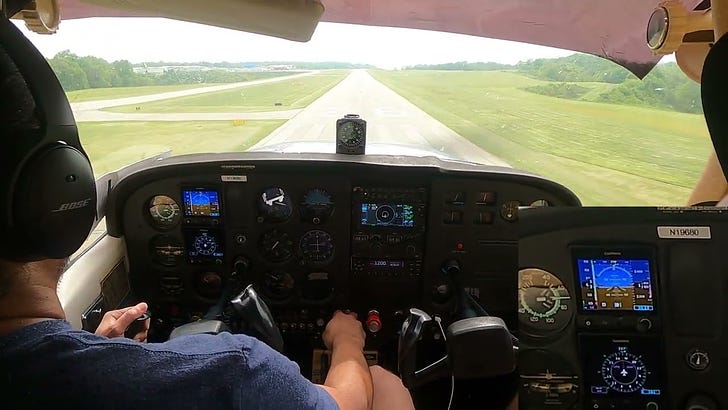As I continue to finesse my landings, I am now paying attention to new details and new tricks to refine my final approach, and make it more precise. Now, I am past the level of fundamentals and onto the the precision. That means, landing the plane is important, but landing it where I want to land is more important.
It all starts with the downwind, but the key is to not let control slip (pun intednded) until the touchdown. Only and only then you can start thinking about refining your inputs. I am finally there and I am confident that I can get the plane on the ground safely. Now I need to work on doing it with accuracy and that's what I practiced today.
What makes a good landing, “good”?
Energy Management - that is all it all comes down to, especially in the latter phases of your landing. Once you establish your final approach, the goal is to have a stabilized approach, which means constant airspeed at the constant rate of descent. The word “descent” have been snarling and haunting me for months, as I could not imagine the proper way to descend. In my mind, the act of airplane descending was synonyms with flying the plane to the ground. For some reason, I could not comprehend the concept of “sinking”. But, in the end, all it took was just one sentence for it to click.
The sight picture on the final is same sight picture as it is on the downwind.
That was the defining moment in learning the energy management. From that moment on, I stopped diving at the runway and just made sure that I maintain my sight picture, and, voila!! Suddenly I found myself having a lot more time to divide my attention - to check my airspeed, to check my desent rate, to check traffic around me.
Slow dissipation of potential energy by manipulating your pitch and throttle input meticulously, to achieve a steady state conversion of that potential energy into the kinetic energy, aka, airspeed, is the key. That’s where it starts to make a good landing “good”.
As I understood the energy management for that part, my final approaches became extremely stable with airspeed and descent rate in proper check.
A page was turned finally, and I started to fly stabilized approaches very consistently.
Okay! That’s great! How do you control where you are going to land your plane ?
After flying stabilized approaches consistently, next step is to actually control where the plane whould land. The way in which you establish a stabilized approach is by establishing an “AIMING POINT” and a “TOUCHDOWN POINT”, and then keeping your aiming point in the center of your windshield. Aiming Point is a point where you would land (or crash) if you absolutely do nothing once on the final approach. Touchdown Point is a point where the airplane would touchdown after your round-out and flare. The idea is that you fly to your aiming point till it starts to disappear under the nose of the airplane. At that point you gradually start to round-out, and then flare, and wait until the mains touchdown. As you start to round out the plane enters the “ground effect”, and without flare, which is pulling the yoke back to let the plane settle itself down to the runway, the plane would just float for as long as it runs out of the energy. That is okay if you have unlimited runway, but unfortunately that is not the case.
Now, once round-out and flare is mastered, next step is to continue along the extended centerline of the runway. As you near the ground, the airflow over the control surfaces reduces, and as a result, airplane needs a lot more input, especially on rudder pedal. That is the last bit where I still struggle, but I think I may have figured out a way to anticipate the effect as I near the ground. I am looking forward to the next lesson when I actually will get to test my theory out, as I have already cross-checked it with Drew.
Until this point, I was my worst enemy, and once I started flying stabilized final approaches consistently, it started becoming more and more clear to me - LESS IS MORE is actually true with respect to control inputs.
That is it for this lesson. Till next time, enjoy the video of one of my landings from today’s lesson.



